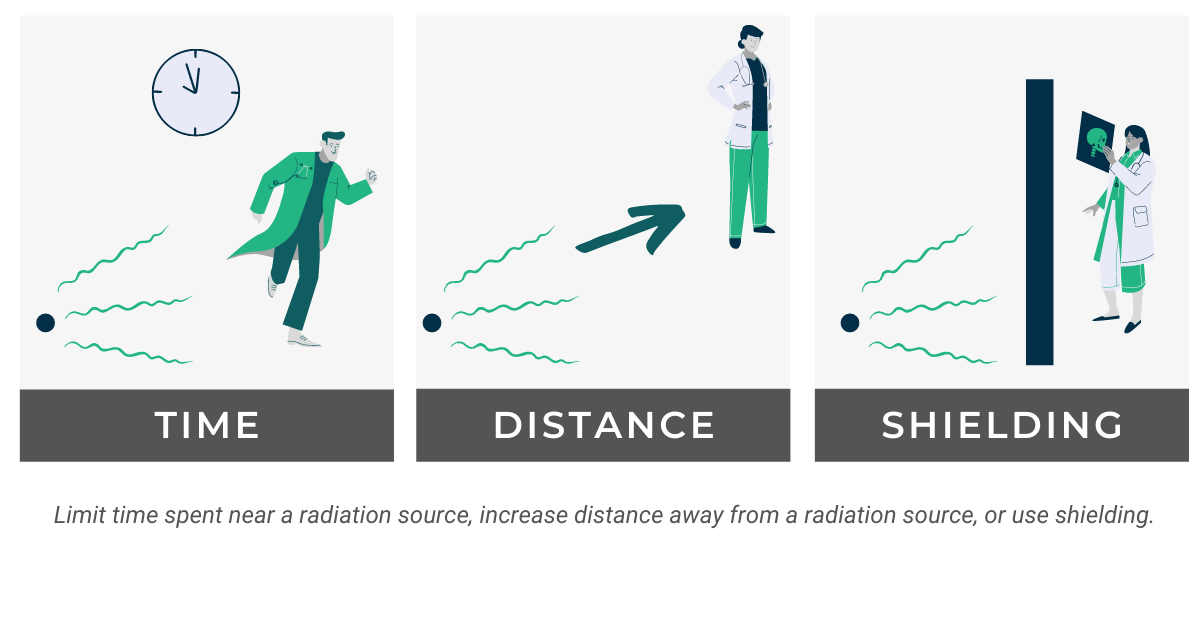Any workplace, regardless of industry, can be affected by an emergency or accident. However, if your facility works with man-made ionizing radiation sources such as medical diagnostic equipment or radiopharmaceuticals, it is important you prepare for potential radiation incidents to ensure a swift and appropriate response should something occur.
Workplace radiation incidents can include:
- Radioactive material spills or releases
- Contamination of personnel
- Malfunctioning safety controls
- Lost, stolen, or orphaned radioactive material sources
- Equipment leaks (ex. Industrial equipment)
- Transportation incidents or accidents
- Misuse of medical source materials or industrial radiographic material
While clean up methods and preventative measures will vary depending on the type and severity of the incident, how you collect and track information regarding the incident should be standard across your organization.
Identifying How the Accident Occurred
The first step in responding to a workplace radiation incident is understanding how the accident occurred in the first place. Was there any missing signage in the area where the accident occurred? Were ALARA principles being followed by all personnel? Has the equipment been properly maintained and inspected regularly? Even accidents that occur due to simple human error should be noted and tracked, especially if similar incidents happen regularly.

Identifying the Type of Radiation Exposure During an Incident
During a radiation incident, it is important to determine if and how an employee was exposed. The risk from exposure varies depending on the energy the radionuclide emits, the type of radiation (alpha, beta, gamma, x-rays), whether the exposure was external or internal (via injection, eating, drinking, etc.), how long people were near the radioactive material, and more.
Tracking this information is important because of the potential health effects that can result from radiation exposure. Exposure to low levels of radiation, such as the amount found in our environment (See Background Radiation Sources), will not typically have immediate health effects. However, it can contribute to overall cancer risk over a long period of time. Exposure to high doses of ionizing radiation can result in health problems ranging from skin burns and radiation sickness to cardiovascular disease and cancer.
Follow-Up
Sometimes the effects of a radiation incident or exposure will not be known right away. As time goes on, it can be difficult to recall the details of the incident with enough clarity to implement preventative measures. In these situations it is recommended that RSOs and EHS managers utilize an Incident Management software to not only identify and track the initial incident, but to use it to look back on what occurred when creating new policies and procedures.
Steps to Protect Against Future Exposure Incidents
Whether your facility handles man-made radiation or naturally occurring radioactive material, there are certain steps that can be taken to protect workers from future exposure after an incident has occurred.
- Implement countermeasures such as time, distance, and shielding
Time, Distance, and Shielding are considered the standard measures for minimizing occupational radiation exposure. Limiting the amount of time spent around a radiation source reduces the overall dose from the radiation source. Similarly, the intensity and dose decrease the farther away a person is from a radiation source. Shielding measures including barriers made of lead, concrete, or water can provide protection from penetrating radiation such as gamma rays.

-
Radiation Safety Training
One of the best ways to keep accidents from occurring is by training employees on the basic principles of radiation safety and the risks of mishandling radiation producing equipment or radiopharmaceuticals. It is important to provide refresher training periodically, especially in light of an incident, to ensure employees are up to date and prepared.
- Regular monitoring, inspections, and facility audits/surveys are also ideal ways to eliminate radiation accidents and ensure everything is operating smoothly.
Implementing safety measures and following ALARA principles will help decrease the number of incidents that occur, however it probably won’t eliminate them entirely. To ensure the safety of both yourself and others in your facility, it is vital that radiation incidents be attended to promptly. Furthermore, it is important that such incidents be carefully recorded and tracked to prohibit the incident from occurring again. Utilizing Incident Management software is a great way to help you document accidents, emergencies, and illnesses, view trends in data to identify problem areas, and help you prepare and prevent future incidents from happening.
Versant Physics radiation safety software suite Odyssey is now offering the Incident Management module. The module, which can be used individually or in conjunction with any of Odyssey’s radiation safety modules, provides RSOs and EHS professionals the ability to monitor and track a variety of workplace incidents, including radiation safety events.

The module features a user-friendly dashboard for easy tracking and analysis. Users can also efficiently follow-up with open cases and analyze trends in reported incidents, making it easier to create a safe, compliant workplace for you and your staff.
Contact sales@versantphysics.com to schedule a demo or visit our Odyssey page for more information on functionality and pricing.
Resources:
- For more information on emergency preparedness, visit www.osha.gov/emergency-preparedness/radiation
- To learn about radiation exposure and health effects, visit www.epa.gov/radiation/radiation-health-effects
- To learn more about minimizing exposure, visit www.nrc.gov/about-nrc/radiation/protects-you/protection-principles.html


